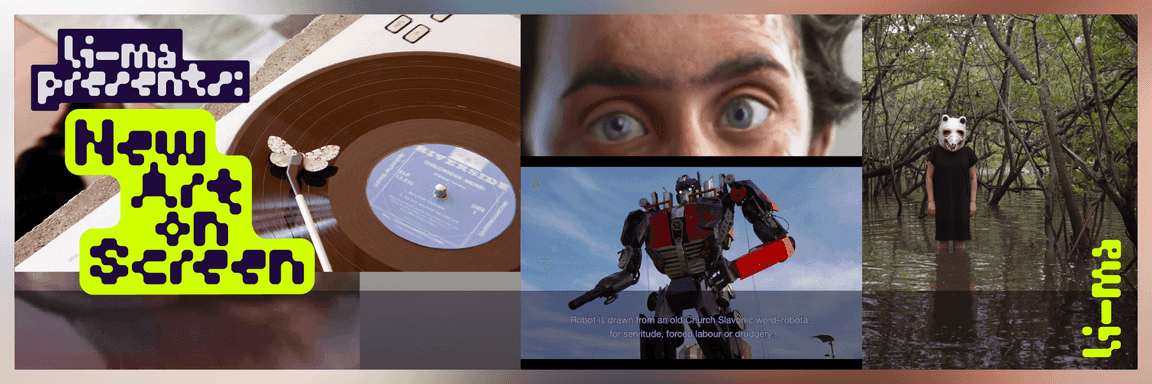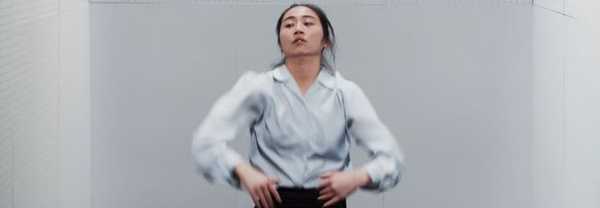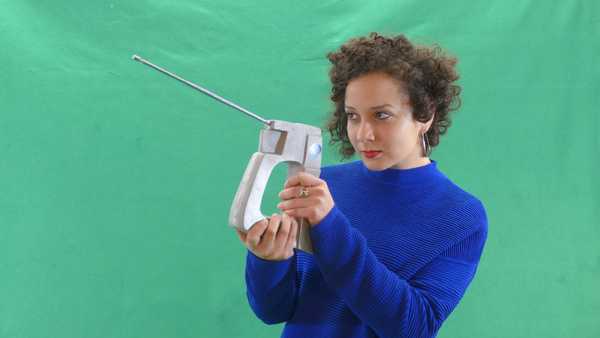
LI-MA Presents: New Art on Screen
Join us for an evening of screenings and talks on Wednesday 6 March at LAB111.
Throughout the year, LI-MA presents several programmes of media and video art from its own collection and with guest curators – all at LAB111, where the LI-MA office is located. In this edition of New Art on Screen (formerly New Works), LI-MA is proud to present a series of new video works by Patricia Werneck Ribas, Natalia Jordanova, Gabriel Lester, and Arno Coenen & Rodger Werkhoven.
In Para M (To M) (2023), her essay film resulting from a trip to her native Brazil, Patricia Werneck Ribas explores the legacy of seventeenth-century Dutch governor Johan Maurits van Naussau-Siegen. Natalia Jordanova’s Visits to Other Possible Worlds (2022) is a visual essay reflecting on the artefacts created in support of religion, technology and humans themselves. After its world premiere at IFFR 2024, Gabriel Lester’s Dig It (2023) presents a tribute to the extraordinary bond between Jazz patron Baroness Pannonica "Nica" de Koenigswarter-Rothschild and legendary composer-pianist Thelonious Sphere Monk. Finally, Arno Coenen & Rodger Werkhoven’s Let’s Be Friends (2022) follows screenings worldwide with its Amsterdam premiere: the world’s first ever AI-generated animated short film.
Please note that the event starts at 19:30 sharp, so latecomers cannot be admitted. We Are Public members cannot reserve tickets in advance, but may enter for free by scanning their passes at reception.
Programme details
Patricia Werneck Ribas, Para M (To M) (2023, 12min)
A woman’s voice passionately addresses the enigmatic figure “M” in a narrative that initially portrays a positive shift as one colonial ruler replaces another. However, the story ultimately exposes the persistent and oppressive nature of the colonial enterprise within an enduring framework. The initial “M” refers to Maurits in Johan Maurits van Nassau-Siegen, a seventeenth-century governor sent to Brazil as a representative of the Dutch West Indies Company. Despite the prevailing positive perception of this governmental change and idealised views of Maurits’s presence in Brazil, recent research uncovers the dark legacy of his dictatorship. The letter “M” emerges as a symbol branded on the skin of enslaved Africans under his possession.
Through a creative juxtaposition of images featuring women and reappropriated colonial arte-facts in and around Recife, Brazil – an outpost of Dutch occupation – this essay film intricately weaves a poetic letter including contemporary dance. It seeks to discern the potential for the subaltern voice to articulate itself. The film powerfully underscores that while the articulation of truth may demand time, its revelation remains an inevitable prospect.
Patricia Werneck Ribas is a Brazilian-born artist based in Amsterdam, working mainly with moving and still images. Questions regarding identity and power relations in a post-colonial society form the basis of her research. Her focus is on inviting the viewer to imagine themselves in the place of the other. She disrupts familiar perceptions by investigating how personal narratives connect with wider political and social debates and concerns. She has an Audio Visual Arts degree from the Gerrit Rietveld Academy in Amsterdam and has participated in several group exhibitions and screenings in The Netherlands and abroad including the Stedelijk Museum, Amsterdam (NL); Eye Film Museum, Amsterdam (NL); Cannes Short Film Festival, Cannes (FR) and many others.
Natalia Jordanova, Visits to Other Possible Worlds (2022, 21min)
What do the internet and religion have in common? This visual essay reflects on the artefacts created in support of religion, technology and humans themselves. Through an intimate monologue, it studies the correlation between those different realms. Both religion and technology can be understood as systems of beliefs. The work explores the relationship between man and technology, initially contemplating film producer Rosen Petrov's invention: the first humanoid robot in Bulgaria. Visits to Other Possible Worlds mixes documentary and fiction to explore and share the path of the person who invents and constructs a person. The story references Bulgaria's technological past and speculates about its possible future.
Natalia Jordanova is an interdisciplinary visual artist born in 1991 in Sofia, Bulgaria, working between Amsterdam and Sofia. Her education includes a master's programme at the Dirty Art department of Sandberg Institute in The Netherlands (2020); BA in Fine Arts from the Royal Academy of Art in The Hague (2018), BA in Photography from the National Academy of Theatre and Film Arts in Bulgaria (2013) and Erasmus exchange programme at Central Saint Martins in London (2017). Her work has been exhibited internationally, including presentations at Sofia Art Week (2019), Magma Festival at Kanal Centre Pompidou, Brussels (2019), THE COMMON INN at Nieuwe Instituut, Rotterdam (2019), and many others.
Gabriel Lester, Dig It (2023, NL, 22min)
After its world premiere at IFFR 2024, step into the enchanting world of 'Dig It,' an experimental film about a friendship transcending great divides, a testament to the power of music and human connection. This tribute to the extraordinary bond between Jazz patron Baroness Pannonica "Nica" de Koenigswarter-Rothschild and legendary composer-pianist Thelonious Sphere Monk. In this musical journey, we explore Monk's final dream, carefully guarded by Nica. Together, they weave a tapestry of memories, sharing countless adventures, cherished feline companions and heartfelt wishes gathered from Hep Cats, the nickname for Jazz musicians frequenting Nica's home.
Their story defied conventions, showing that genuine friendships know no bounds, transcending backgrounds, and erasing differences. Monk and Nica, united by their love for jazz and a profound understanding of one another, stand as an enduring example of how two souls, from entirely disparate worlds, can create beautiful harmony in life's intricate melody.
Gabriel Lester is a filmmaker and self-described inventor. His works consist of installations, sculptures, performances and films, besides commissioned art in public space, physical structures and design. Lester’s practice has come to embrace all imaginable media and talent. Ope-ended, unresolved, seeking to keep mysteries alive and without explicit messages or singular ideas, his works proposes ways to relate to the world, how it is (re-) presented and what mechanisms constitute our perception and understanding of it. He studied at St. Joost Academy of Fine Arts and Design, Breda and attended the St. Lucas Academy, Brussels.
After screening all around the world, this pioneering work – arguably the world’s first AI-generated animation – makes its Amsterdam premiere. In Let’s Be Friends, see and hear synthetic actors talk about ‘AI-acting’, anticipating early on many artists’ fears of losing their artistic exclusivity because of emerging AI technology. Synthetic actors – generated with DALL•E 2 – explain the differences between ‘traditional’ 3D-animated characters and them, AI-generated actors, as well as how artificial intelligence will affect acting careers in general soon. Some of the characters already appeared in Coenen’s earlier work, settling the record for being the world’s first-ever talking AI-generated characters.
In just a few seconds, OpenAI’s DALL•E 2 generated all the synthetic actors from a random set of pixel-noise just by resorting to its machine-learning model, following Arno’s and Rodger’s art direction in natural language. However, DALL•E 2 is not capable of generating animation. Therefore, Werkhoven and Coenen resorted to an AI built by D-ID. That AI generated all the movement and voices needed for the many minutes of lip-sync synthetic chit-chat, which also takes just a couple of seconds to generate. Except for the ‘after effects’, everything else in this work has been exclusively achieved by AI.
Both Coenen and Werkhoven have extensive careers in autonomous and applied art, spanning several decades. They first met in the early 1990s when Coenen was a pioneering CGI VJ blending analog and digital art forms in the underground art scene, and Werkhoven was an underground electro DJ experimenting with electronic music and generative image creation. They frequently encountered each other in the experimental art scenes of Rotterdam, The Hague, and Amsterdam. In spring 2022, Werkhoven, then as independent creative director serving OpenAI, introduced Coenen to the San Francisco-based Artificial Intelligence research labs. Soon after, Coenen and Werkhoven co-founded CollaborAitors as the platform for their AI-driven art collaborations.
Images & clips taken from works mentioned above, all distributed by LI-MA.









